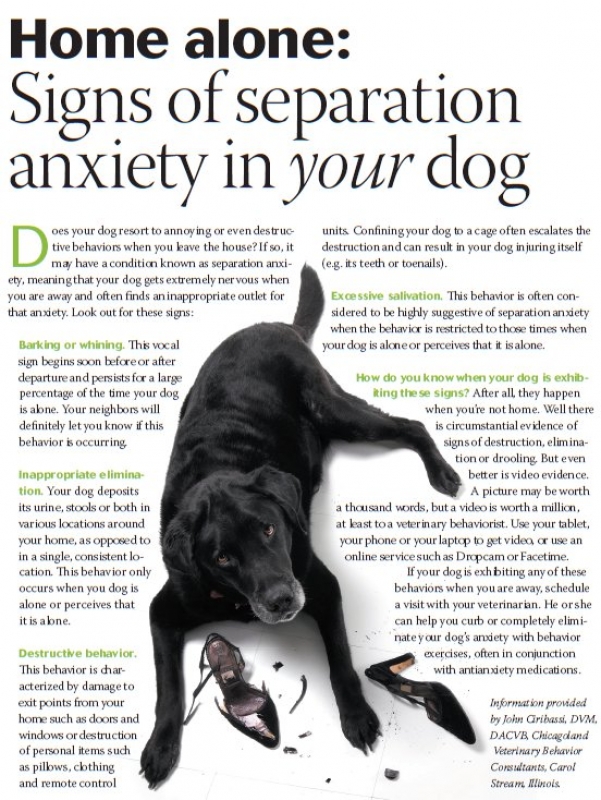Anxiety
Separation anxiety is a very common anxiety and ranges from fairly mild to severe. Some people don't recognise it for what it is and can inadvertently worsen the anxiety through inappropriate responses and mismanagement. Here are some of the signs and next we will look at simple ways to help.
So now that we have looked at the signs of Separation Anxiety, let's look at some behaviour modification techniques:
- Write down a list of what you do as you get ready to leave the house. Then perform these actions without leaving the house - essentially 'uncoupling' the actions from the act of departing.
- Ignore your pet for the 1/2hr before leaving, and in the 5-10mins before leaving provide a distraction such as a chew toy or treat.
- Do practise runs - leave the house for 2mins, then 5mins, then 10mins etc over a period of time to begin the de-sensitisation process and to teach your pet you will come back.
- Crating, or teaching them to go to a 'safe' spot can help immensely, as they can feel more comforted there (see us for handouts on Tranquility Training).
- Exercise is great for everyone, and can give your pet a different focus. So increasing exercise can help too!
- Sometimes medications to control the anxiety are needed too, in order to allow your pet to calm down enough to focus to learn. These are often temporary, and the behaviour modification is the most important.
As always, remember behaviours take TIME!! They can't be fixed overnight as they are habitual and often reinforced over long periods. We can often teach new ways, but we can't force them, and quite often we end up finding a happy medium that everyone can live with.
Contact us for more information, or help if you think your pet has Separation Anxiety!

